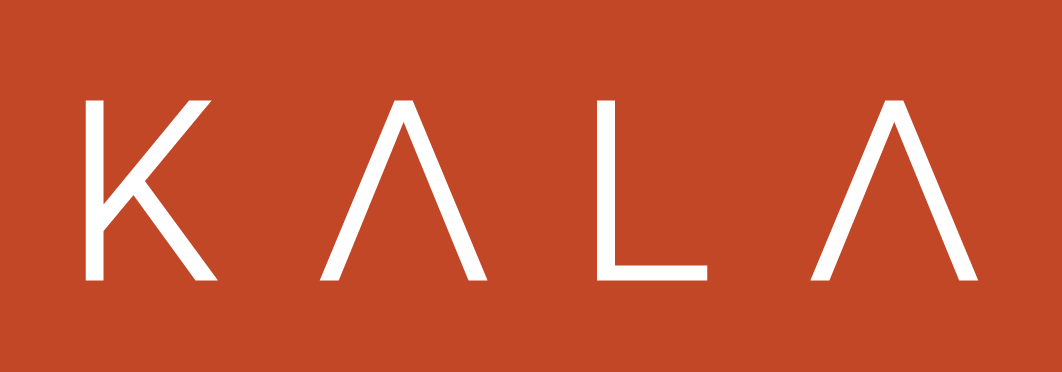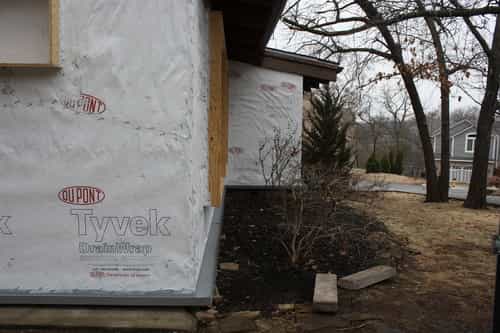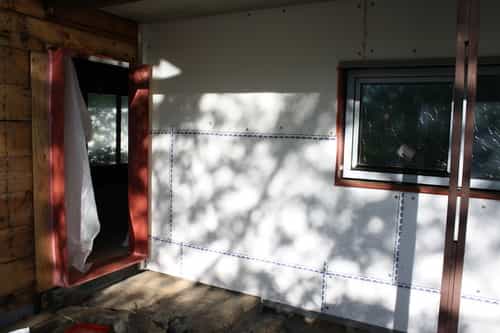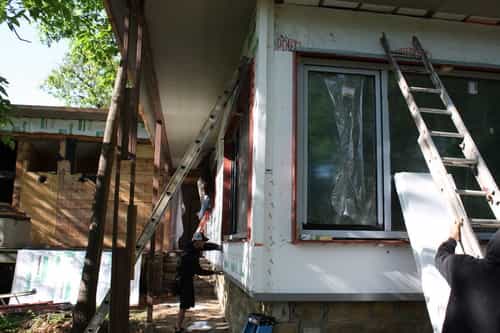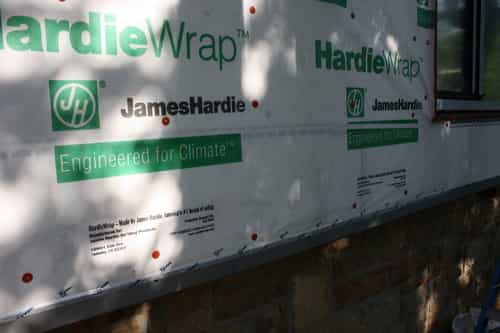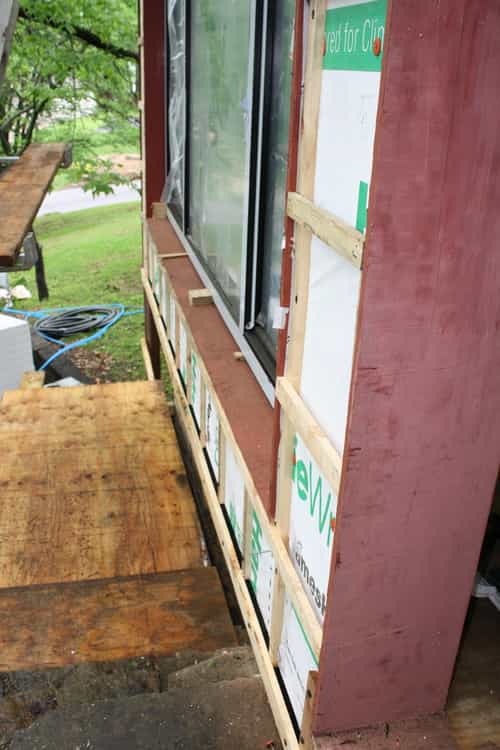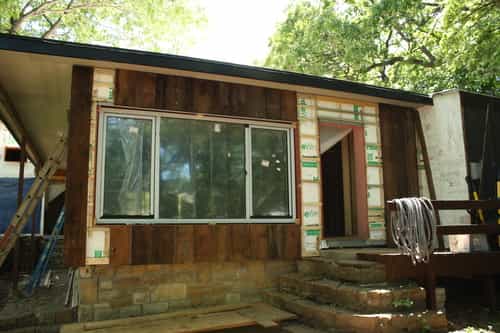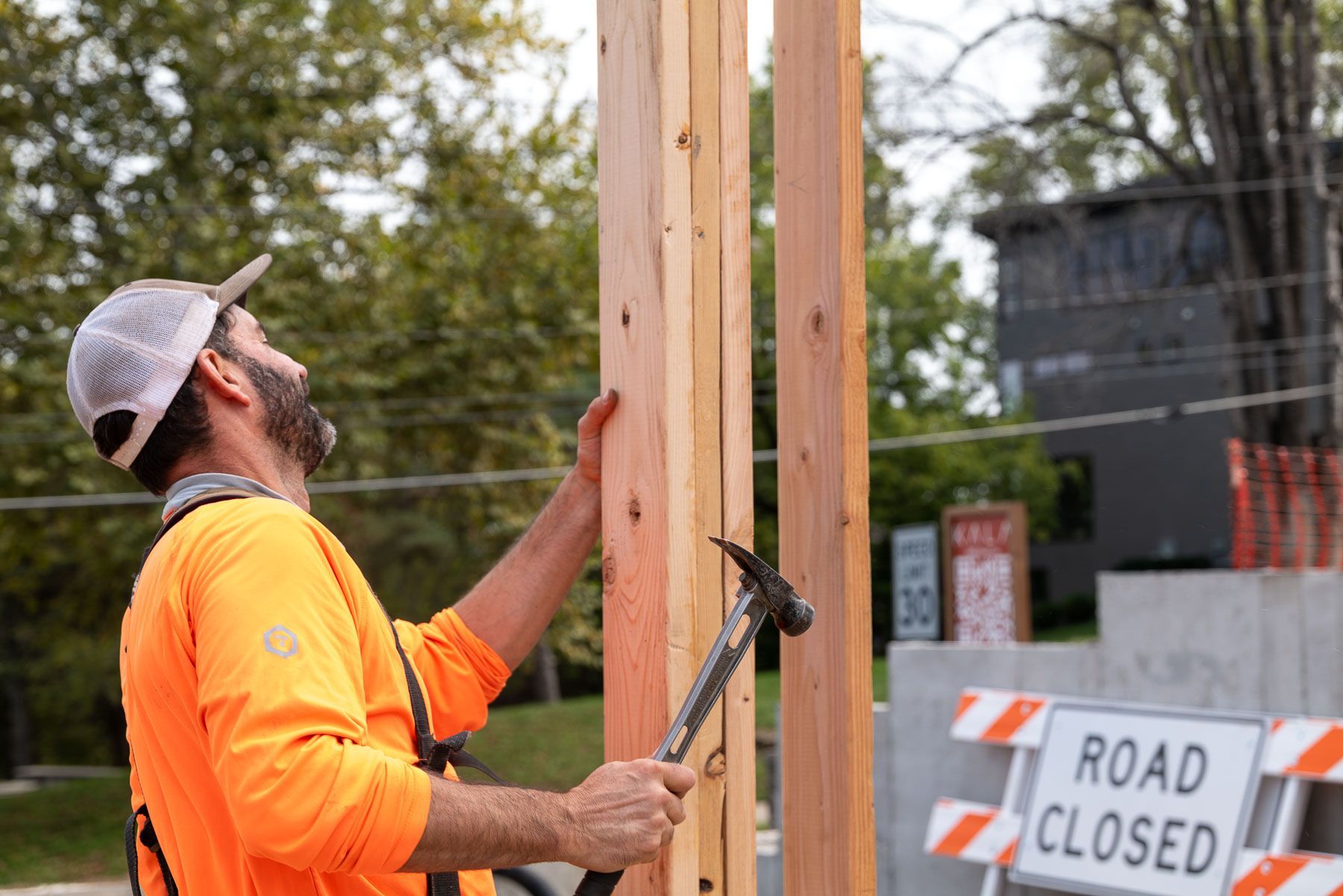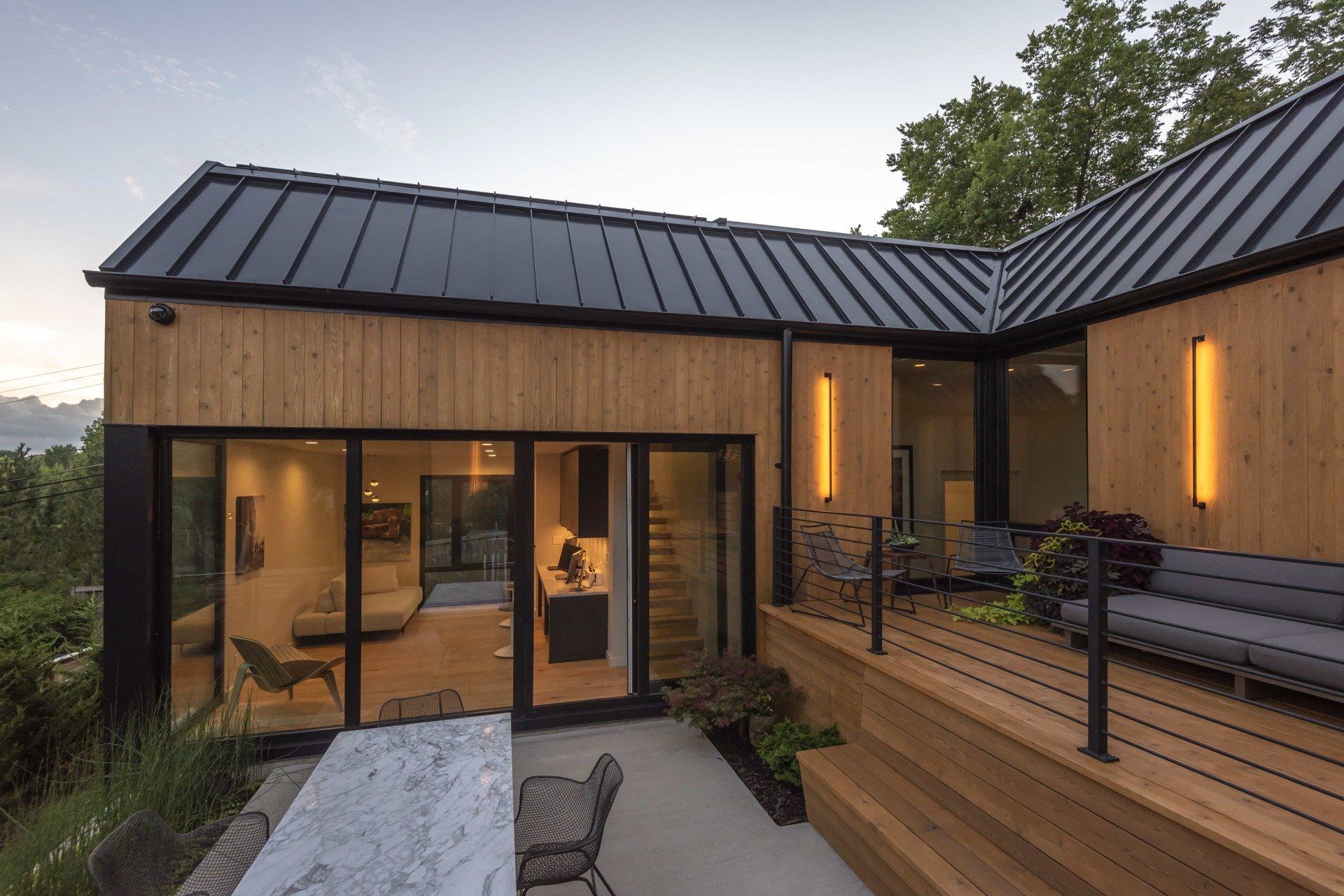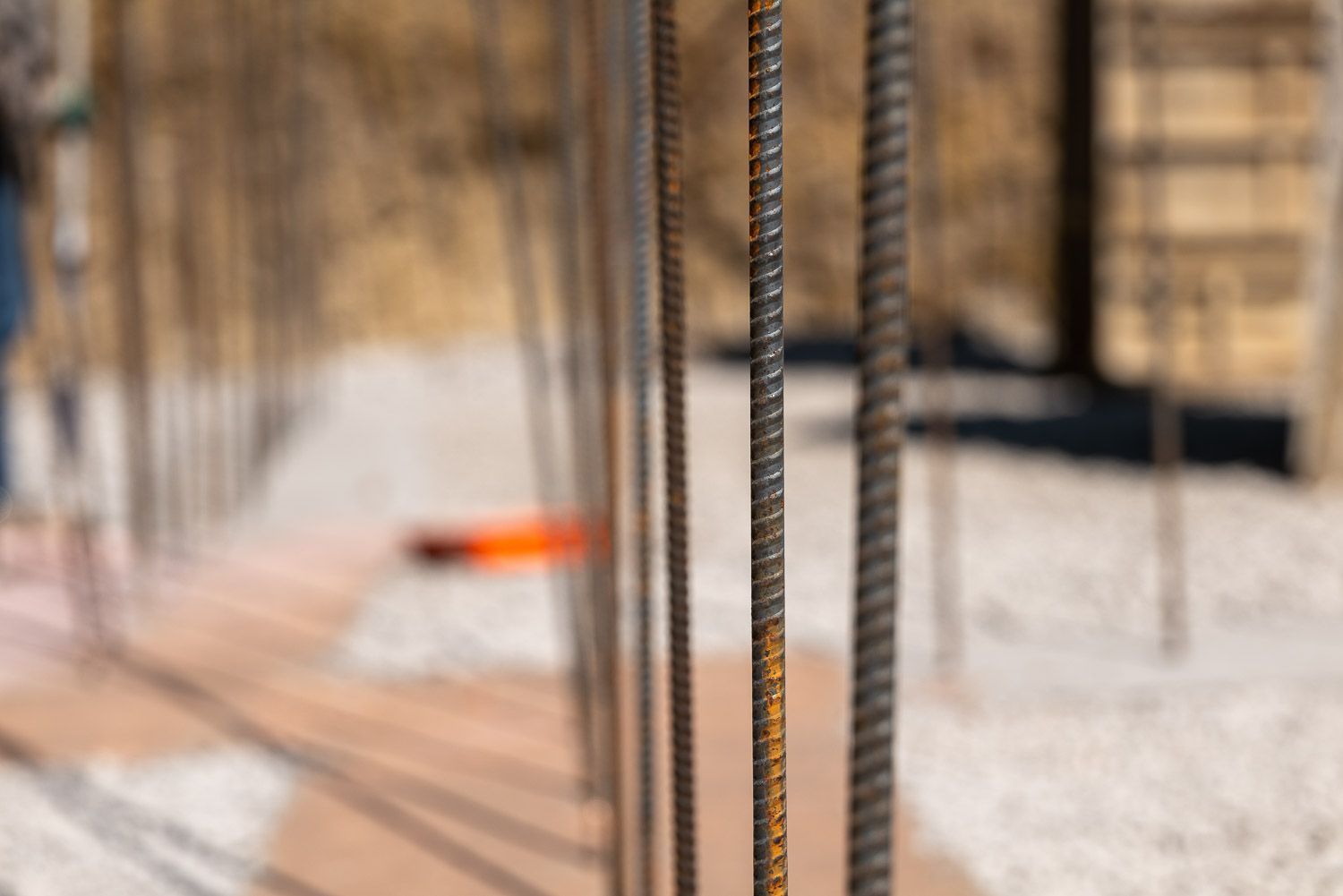Lake Quivira Passive House - High Performance Wall Assembly
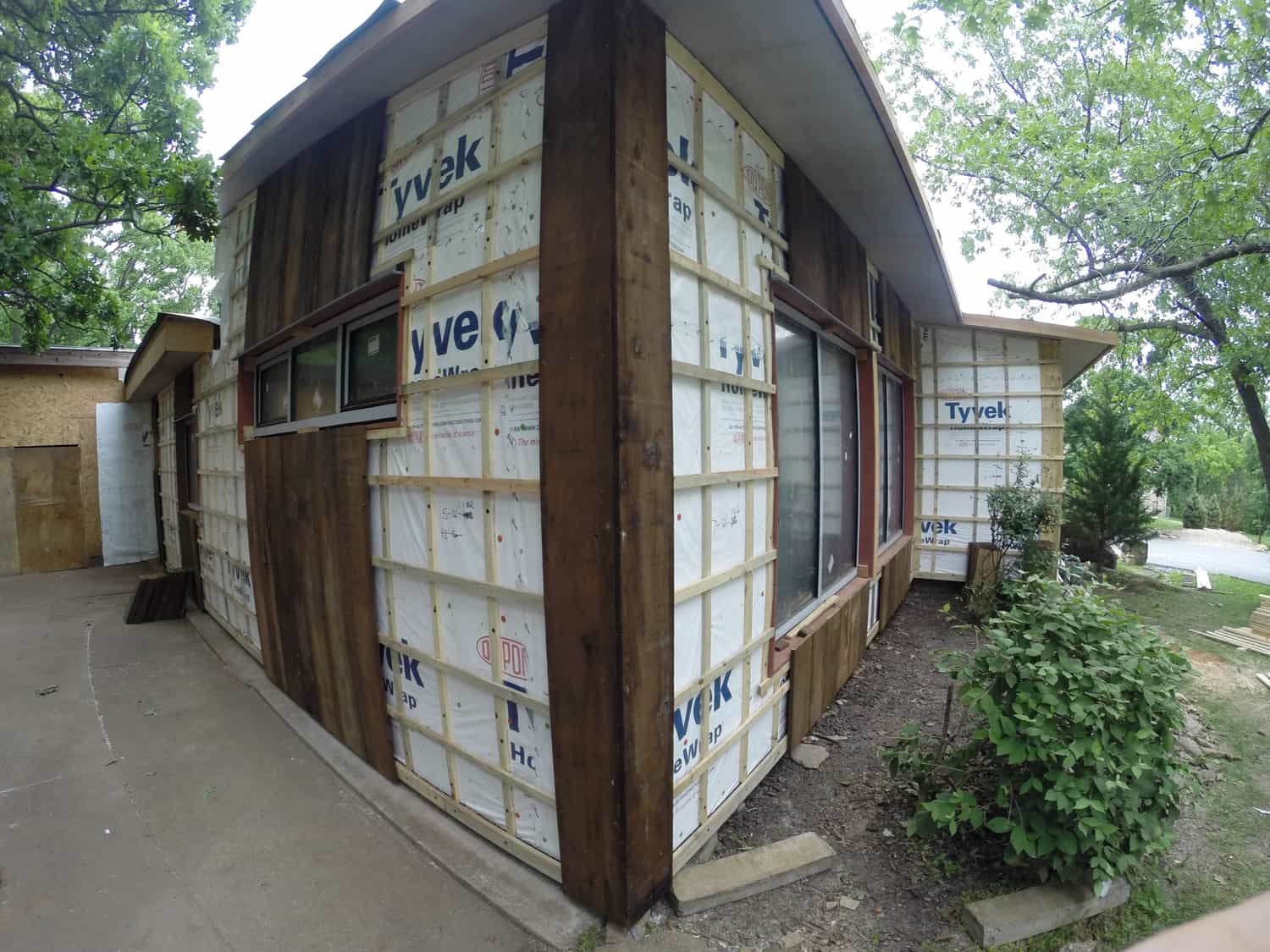
High Performance Wall Assembly
The exterior wall assembly is nearing completion at the Lake Quivira Passive House. This multi-layer envelope contains superior insulation, aids in airtightness, and is designed to protect against the elements. Watch Building Scientist David Hawkins take us through the composition of the wall, explaining each of the layers in the video below.
The system begins with a weather membrane over the existing sheathing. This initial layer is continuous around the entire home and ties into the Prosoco flashing material on the windows and doors. The membrane shields the structure from the elements and gives a layer of airtightness.
The next components in the wall system are two layers of 3” EPS rigid foam insulation. This foam is installed over the entire exterior surface of the home. Each piece is custom measured and cut to fit its precise location on the wall. We are mindful to tape every seam between the pieces of foam. Any gaps between the foam and existing structure are filled with spray foam to ensure a continuous insulation layer. The sealed seams on each layer of foam are offset of each other to ensure there are no voids in our insulation. This also aids airtightness.
A final layer of weather membrane is installed overtop to provide weatherproofing for the foam insulation. This membrane adds an additional component of airtightness and is the base layer for the rain screen system.
Special 10 inch screws were required to attach vertical furring strips on top of the foam. These screws go through the one inch furring strips, through six inches of foam, through one inch of sheathing, and then two inches into the studs. The furring strips provide support for the exterior siding. Horizontal furring strips were then installed, to which the vertical-run siding material attaches.
At the base of the wall below the vertical strips is a piece of coravent material. This material has holes that run through it that allow any moisture that gets behind our siding material to drain. The holes also allow air movement behind our siding throughout the cavities created by the vertical furring strips. The air movement ensures our wall assembly stays dry. The underside of the coravent has a thin mesh material, which keeps insects from getting behind our siding and burrowing into our wall. The coravent material is essential in ensuring a durable, long-lasting wall assembly.
The final layer of our rain screen and exterior wall assembly is the vertical-run rough cedar siding. Much of the material for the siding was reclaimed from the existing siding material. The exterior siding is close to completion, and the Lake Quivira Passive House will soon be weathertight.
